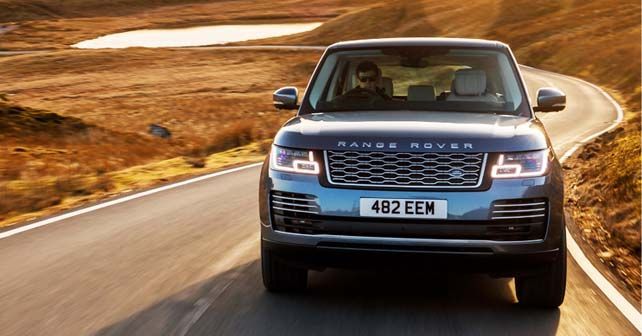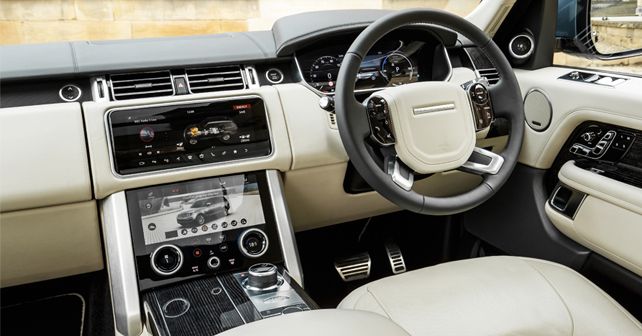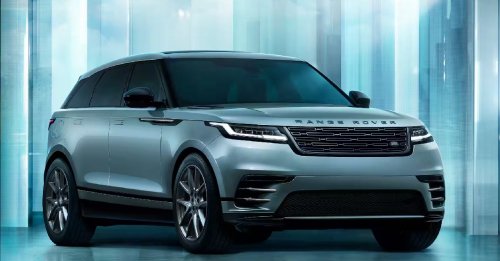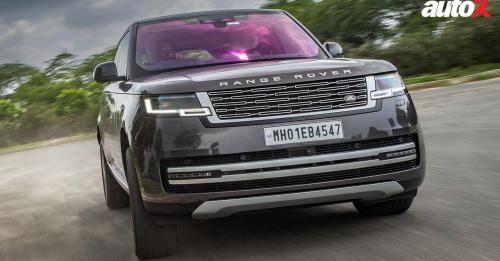The flagship Range Rover gets more tech, luxury and comfort for 2018, as well as a hybrid drivetrain for the first time – making the ultimate luxury SUV even more desirable than before.
Let me begin by saying that the current Range Rover didn’t really need much improving. Sure, the infotainment system was due for an upgrade, since it had been upstaged by the flagship’s less luxuriant cousin – the Velar. So, Land Rover did the obvious thing and performed a bit of corrective surgery – both inside and out.
The front grille now looks more modern, with design cues from the svelte Velar. At the back too, the taillights have been updated and look quite pretty now. The exhaust tips – even on the hybrid – are more prominent and look rather purposeful. On the whole, it looks fresh and modern – but the real changes are in the cabin.
Of course, the updated Range Rover gets the new Touch Pro Duo infotainment system, with its twin 10-inch touchscreens in the centre console. Like the Range Rover Sport, the TFT display that makes up the instrument cluster has also been updated – as has the head-up display. But, in India, what’s likely to clinch the deal for most buyers is the new executive rear seat package in the extended wheelbase version. Let’s just say that if you step out of your private jet and into the back of the Range Rover, you’ll feel perfectly at home.
Private jet for the road
The rear seats recline by up to 40-degrees and provide over a metre of legroom with the front passenger seat folded forward – the seatback of which has a footrest that folds out so you can literally put your feet up. The rear seats have 22-way adjustments and 25 massage programs. And to ensure that your mobile office is fully functional, you get 17 connection points in the cabin. You also get electrically deployable rear tables, as well as heated and cooled seats – not to mention heated arm, foot and calf rests. Even the operation of the central armrest and cup holders is automated – which, if I’m honest, would give me nightmares, since you’re in for trouble if you so much as blow a fuse in a car with so much tech. Plus, of course, try explaining the touchscreen operation to your ‘chauffeur.’
Fortunately, then, the new Range isn’t just about the back seat – the driving experience is still very rewarding indeed. And so is the off-road ability – even in the hybrid. Despite a battery pack and electric motor, the flagship Land Rover retains its class-leading 900mm wading depth. So, effectively, you can still go swimming in this machine – you wouldn’t, but you could! In fact, the additional (and immediate) torque from the electric motor is actually quite useful when the going gets tough off-road.
The P400e plug-in hybrid is powered by JLR’s ultra smooth 300PS 2.0-litre, four-cylinder Ingenium petrol engine mated to an 85kW electric motor that gives it a very respectable combined output of 398bhp and 640Nm – which enables it to sprint to 100km/h in 6.8 seconds and, more importantly, gives it 51 kilometres of electric-only driving range. Charging the 13.1kWh high-voltage lithium-ion battery pack takes less than three hours with a dedicated 32-amp wall box. With the standard 10-amp home charging cable that time extends to seven-and-a-half hours.
In India, we’ll continue to get the two V6 motors (petrol and diesel) and the V8 petrol as well. With the current regulatory environment, which offers no benefit to hybrids, we’re not likely to see the P400e in the near future. But what it points to is the fact that Jaguar Land Rover – with the launch of the all-electric Jaguar I-Pace SUV and the electrification of its regular product range – is very well placed for the future. The integration of the electric drivetrain in this instance is absolutely seamless, and the silent operation of this flagship Range Rover is actually quite fitting.
My only concern is the real-world efficiency of hybrids such as this. During short commutes, and with a full battery, the zero-emissions fully electric range will prove very useful indeed, but during our brief escapade in this machine, we saw a less than impressive average fuel economy figure of 11km/l – versus a claimed figure north of 40km/l. Bear in mind, of course, that we were playing in the mud and being very liberal with the throttle pedal once out of the road. The 2.0-litre petrol engine, mated to the electric motor, was more than willing to propel this mighty SUV enthusiastically down the road – perhaps a little too enthusiastically given the observed fuel economy! But I’m sure, if driven more sedately – and in all-electric mode – far better efficiency figures can be achieved.
All told, the Range Rover moves very eagerly and painlessly into the future – and it remains the ultimate luxury car for our market, bar none.
- Range Rover Autobiography P400e Plug-in Hybrid
Engine: 1,997cc / 4 Cylinders / 16 Valves / Turbocharged
Electric Motor: 85kW
Battery: 13.1kWh Lithium-ion, Prismatic Cells
Fuel: Petrol
Transmission: 8-Speed Automatic / All-Wheel Drive
Power: 398bhp
Torque: 640Nm
Acceleration: 0-100km/h - 6.8 seconds
X-factor: No other machine offers quite this much desirability and versatility all rolled into a single package.
| Pros • Sublime integration of the electric drivetrain • Incredible refinement and luxury | Cons • Hybrid not on offer in India yet • Perhaps too tech-laden |





![Land Rover Range Rover [2018-2022] Land Rover Range Rover [2018-2022] Model Image](https://static.autox.com/uploads/cars/2018/07/land-rover-range-rover-28-Jun-18.jpg)




















Write your Comment